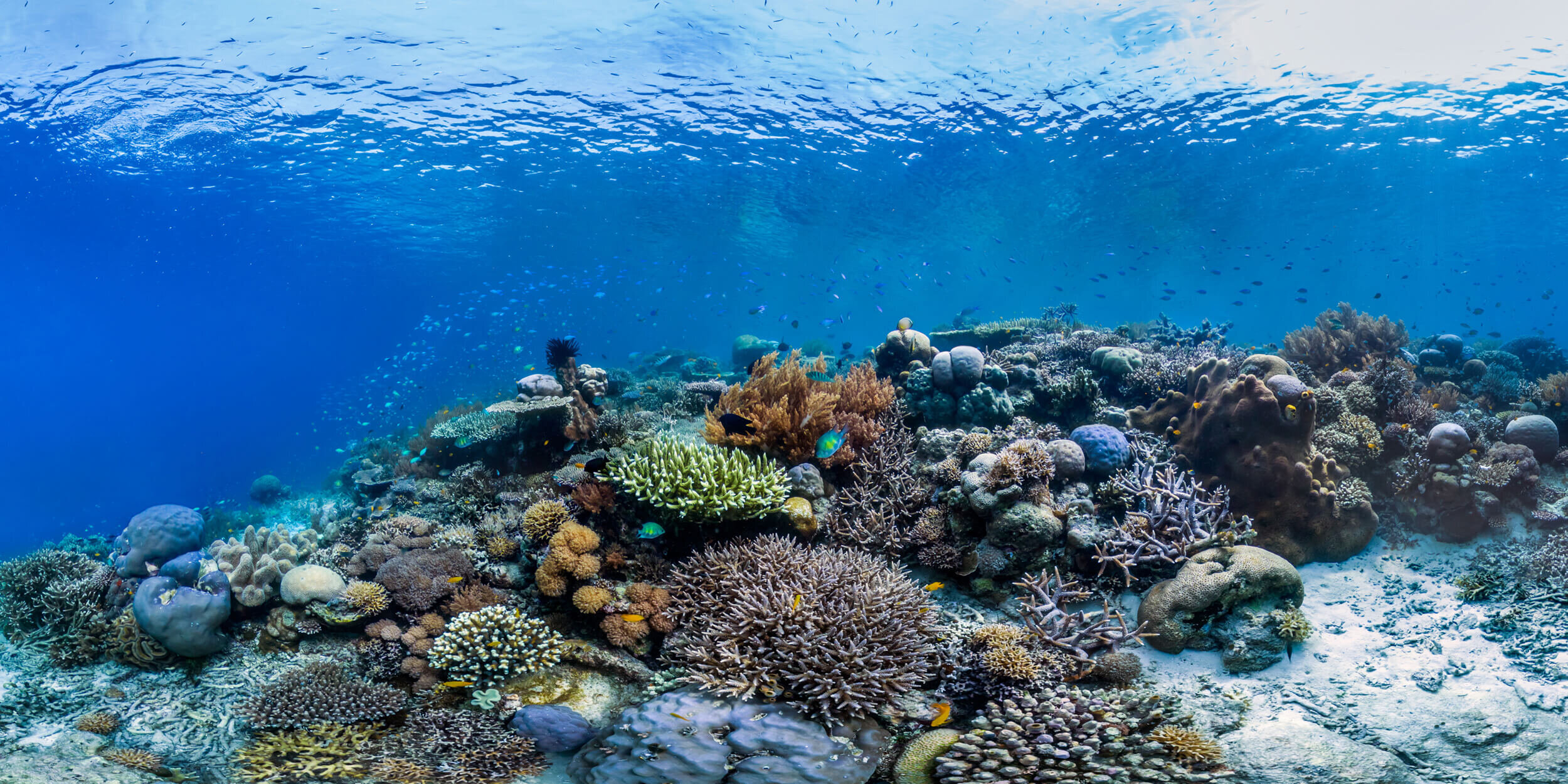The Coral Triangle: The Centre of Marine Biodiversity
Heather Baxter
Spanning 6 countries (covering parts, or their entirety) and 6 million km2 of oceanic waters, the coral triangle is the global centre of marine biodiversity. Important not only for marine life but for people too, this key region is threatened by overfishing and climate change. Scroll down to find out more about this incredible region of coral reefs.
Location map of the coral triangle. Photo: Shutterstock.
The diversity of the coral triangle
The coral triangle contains 30% of the world’s coral reefs and is home to more than 2,000 species of reef fish. Visitors to the reef, such as turtles, are also present in the coral triangle, in fact six (out of the seven) turtle species are found here. The waters of the coral triangle also provide places for larger species, such as whale sharks, dugongs, dolphins and whales to feed, breed and migrate.
Corals are the main physical structure within the reefs of the coral triangle and over 600 species of coral are found here. To see how coral diversity decreases in all directions away from the coral triangle take a look at this map.
Why is the coral triangle important?
The coral triangle not only provides a home for marine animals, but also for people – it has a population of 370 million people who speak over 2,000 languages. The marine resources located within this biodiverse ecoregion directly support the livelihoods of over 120 million people. Ecosystem services (benefits that humans obtain from the natural environment) include shoreline protection, tourism, and commercial fisheries. In 2017 the direct economic value of tourism in the coral triangle was over US$ 3 billion and commercial fisheries accounted for US$ 2.3 billion.
The main threats to the coral triangle
Overfishing (catching more fish than the system can support) has been a problem for decades, all over the world. Within some regions of the coral triangle nearly 95% of reefs are threatened by overfishing and/or destructive fishing techniques. Destructive fishing techniques use explosives to stun and kill the fish, which results in the reefs being bombed and reduced to rubble. Other types of fishing gear, such as artisanal fish fences which can stretch for miles, damage the ecosystem in which they are placed, and prevent key life stages from migrating. The main fisheries are coral fish, farmed prawns, and tuna. According to the WWF, the tuna industry in the coral triangle is worth US$ 1 billion annually and the three main species targeted in this region are skipjack, yellowfin and big eye.
Climate change is a global problem and sea surface temperatures are expected to rise between 1 – 4°C within the coral triangle by 2100. This is a problem because corals live at the edge of their thermal limits and if temperatures increase corals bleach, which leads to a decline in reefs. Additionally, as the oceans absorb carbon from the atmosphere, they become more acidic – a process known as ocean acidification. The people who live in the coral triangle are dependent ecologically, socially and environmentally on the marine environment. When reefs are at risk, this dependence is highlighted.
How can we help the coral triangle?
We can all make small lifestyle changes to help protect our planet. Specifically addressing the threats highlighted above we can:
Eat less seafood
Buy sustainably caught tuna
Reduce our carbon emissions
Educate ourselves and our peers
Coral Triangle - Keruo, Raja Ampat, Indonesia. Photo: © Underwater Earth | XL Catlin Seaview Survey | Christophe Bailhache
DON’T FORGET TO FOLLOW #TMDDOESCORAL ON OUR FACEBOOK, INSTAGRAM AND TWITTER THROUGHOUT JUNE TO LEARN MORE ABOUT THESE FASCINATING CORAL REEF ECOSYSTEMS!


